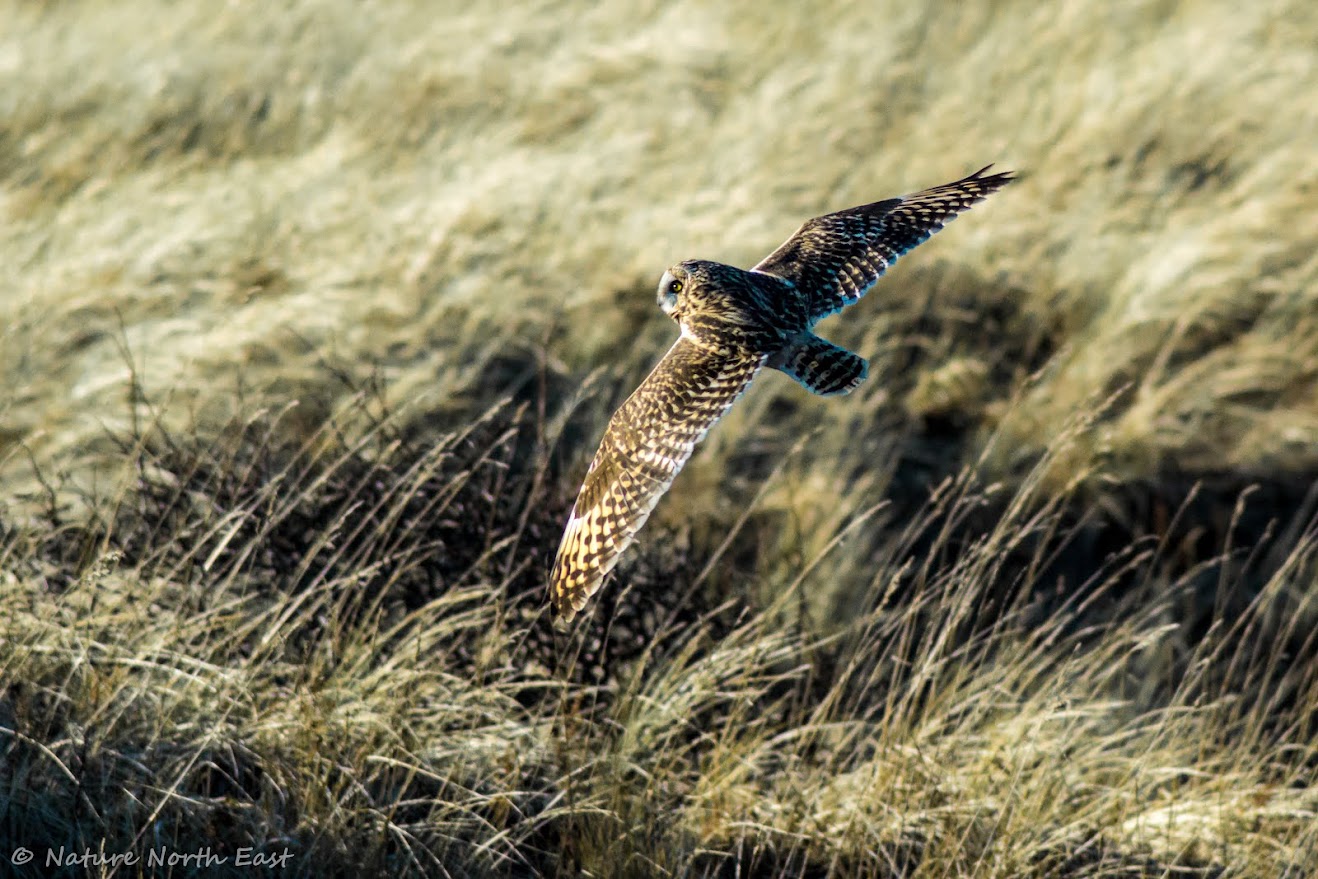 This afternoon myself and a work colleague set out to look for Long Eared Owls on a reliable County Durham roosting site. The white snow covered ground provided a nice juxtaposition to the bright blue sky and the warmth of the afternoon sun was noticeable by its presence.
This afternoon myself and a work colleague set out to look for Long Eared Owls on a reliable County Durham roosting site. The white snow covered ground provided a nice juxtaposition to the bright blue sky and the warmth of the afternoon sun was noticeable by its presence.As were walking along the snow covered track my gaze was drawn to movement 50 yards up ahead, it was a Fox, it quickly seen us and carried on its way. It pains me to know that these beautiful predators are still being persecuted and hunted.
Minutes later and a Male Sparrowhawk flew overhead, his orange barred chest patterns and colouration lit up in the low winter light. Sparrowhawks are really quite common but I never tire of seeing them, I've never been lucky enough to see one at close quarters for any length of time but I'm working on it.
So after a short walk we reached the LEO hotspot and began scanning. We scanned again and again yet nothing showed. Last time I was on this site I had a Long Eared perched almost out in the open, this time was very different. Was it the weather? Had the cold and snowy conditions driven the Owls deeper into the scrub. My assumption was yes. So I began scanning inch by inch, up and down, left and right looking into the deeper areas of hawthorn and assorted scrub.
My attention was then drawn to a brown shape in a gorse high up on the bank, I changed position to get a more clear view and yeah, you guessed it, a Long Eared Owl.
We then slowly found more and more individuals roosting in the deeper recesses of scrub, one I hadn't seen was unfortunately flushed, luckily none of the other birds took flight and they seemed very much at ease.
The trick with Owl watching is to not unsettle them and cause them to take flight, this uses precious energy that they may need to survive, especially during the winter months. When flushed during the day they are also susceptible to attack by corvids as well as birds of prey.
To put it simply;
Keep your distance - Observe - Move on.
In total we found 6 birds at roost and I have to admit that these were the hardest Long Ears I've managed to find. They are so amazingly camouflaged that they become almost unnoticeable in the thick scrub, but in a way its the challenge of finding them that appeals to me. You're never certain your definitely going to see one and its that allure that draws me back every time for another fix.
The picture below has two Long Eared Owls in it believe it or not, both barely visible.
The LEO in the photograph below was tucked deep into the scrub on the embankment, if you look at the centre of the image you will see the owls face with its ear tufts visible. Unfortunately ever present branches meant the birds face was slightly obscured.
I've included a couple of photographs of the individual that took flight, a quick response meant I managed to get a few snaps. The colour on it is really beautiful, I love how rich and almost bronze its feathers are.
Well so far this year I've seen every british Owl but a Barn Owl, I have a few leads to follow up in regards to Barn Owl sightings and as part of The Northern Owl Project I have quite a few locations to visit and check for Owl activity in general. This includes the ever elusive Druridge Lane Little Owl!
I will find you little one!
The mileage is ever increasing, good job the petrol prices are so reasonable at the minute. Can't complain. :)
Until next time.
David
Nature North East/ The Northern Owl Project

































